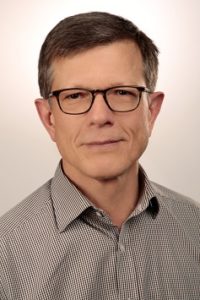
Earlier this year, Siemens developed two compact and light-weight vacuum circuit breakers (VCB) augmenting its popular SION range of switchgear. In the backdrop of these launches, called SION Lateral 3AE61 and 3AE63, T&D India interacted with Bernhard Boes, who is part of Siemens’ switchgear business, to understand these new offerings and also to seek insights into the vacuum circuit breaker business. Boes feel that India, thanks to government-led electrification schemes, can become a big market for medium voltage switchgear, for both indoor and outdoor conditions. An interview by Venugopal Pillai.
Let us start by understanding the generic use of a circuit breaker in a power distribution network.
Circuit-breakers are capable of making and breaking currents both in disturbed and undisturbed operation; from small inductive and capacitive load currents up to the short-circuit current; and this under all operational as well as fault conditions (such as earth faults or phase opposition) in the power system.
What is the critical difference between a vacuum circuit breaker (VCB) and a conventional GIS? What are the advantages of VCB over GIS?
GIS stands for gas insulated switchgear. Also VCB can be inside GIS. Here we compare the switching medium, not the insulation.
The gas used in a gas-insulated switch, as we understand, is SF6. What makes it so popular?
SF6 (sulphur hexafluoride) is a gas used for insulating and switching. It has a number of great features and is well proven with long term experience, which makes it un-substitutable in HV switching.
Gas mixtures of SF6, nitrogen, oxygen, and carbon dioxide are the most widely used as insulating, switching, and quenching gases in high-voltage applications of more than 1 million volts. Depending on the application and product category, they are used in various mixing ratios. The insulating and quenching capacity of SF6 is particularly advantageous in technical terms: it is chemically neutral, non-toxic, resistant to ageing, and stable. When arcs are quenched, the SF6 splits in the vicinity of the arc plasma and recombines into the original form after the arc is quenched. Thus, its full insulating capacity is restored by itself so that operational conditioning is unnecessary.
What complexities arise when VCBs are designed for progressively higher voltages? In other words, are VCBs feasible at all voltage levels?
We understand that Siemens has launched two new VCBs – The Sion Lateral 3AE61 and 3AE63. Please explain how these are superior to existing models.
This new model SION Lateral is based on our current SION family and uses the same platform components which we launched for roughly 3 years ago. That enables a very compact and cost-efficient solution for the lateral breaker market. With the well-proven switching poles design and driving mechanism assembled on a new lateral carrier was born the 3AE6.
What are the major application areas for 3AE61 and 3AE63?
Lateral breakers are fixed mounted breakers and allow a very slim, simple and air insulated panel. Therewith they are perfect for use in ring main units in the secondary distribution and also in wind power, photovoltaic or industry power supply. They also find application in in transformer stations or for retrofit solutions.
Does Siemens intend to launch 3AE61 and 3AE63 in India in the foreseeable future?
Currently, what the major constituent of the Siemens switchgear portfolio in the Indian market?
The electrical industry in the Indian market is on a sustainable growth path. With the government of India’s focus on smart cities and implementation of programmes like IPDS (Integrated Power Development Scheme) manifold electrification projects are underway leading to more and more rural and urban electrifications. It has initiated a demand for sourcing MV switchgear for both Indoor and outdoor conditions.
Considering the footprint space and building investment costs, compact switchgear suitable for outdoor conditions are gaining popularity compared to conventional indoor switchgear. Outdoor kiosks-type switchgear and PCVCB solutions (popularly called as OVCB) are gaining demand for system voltage ratings up to 36kV.
